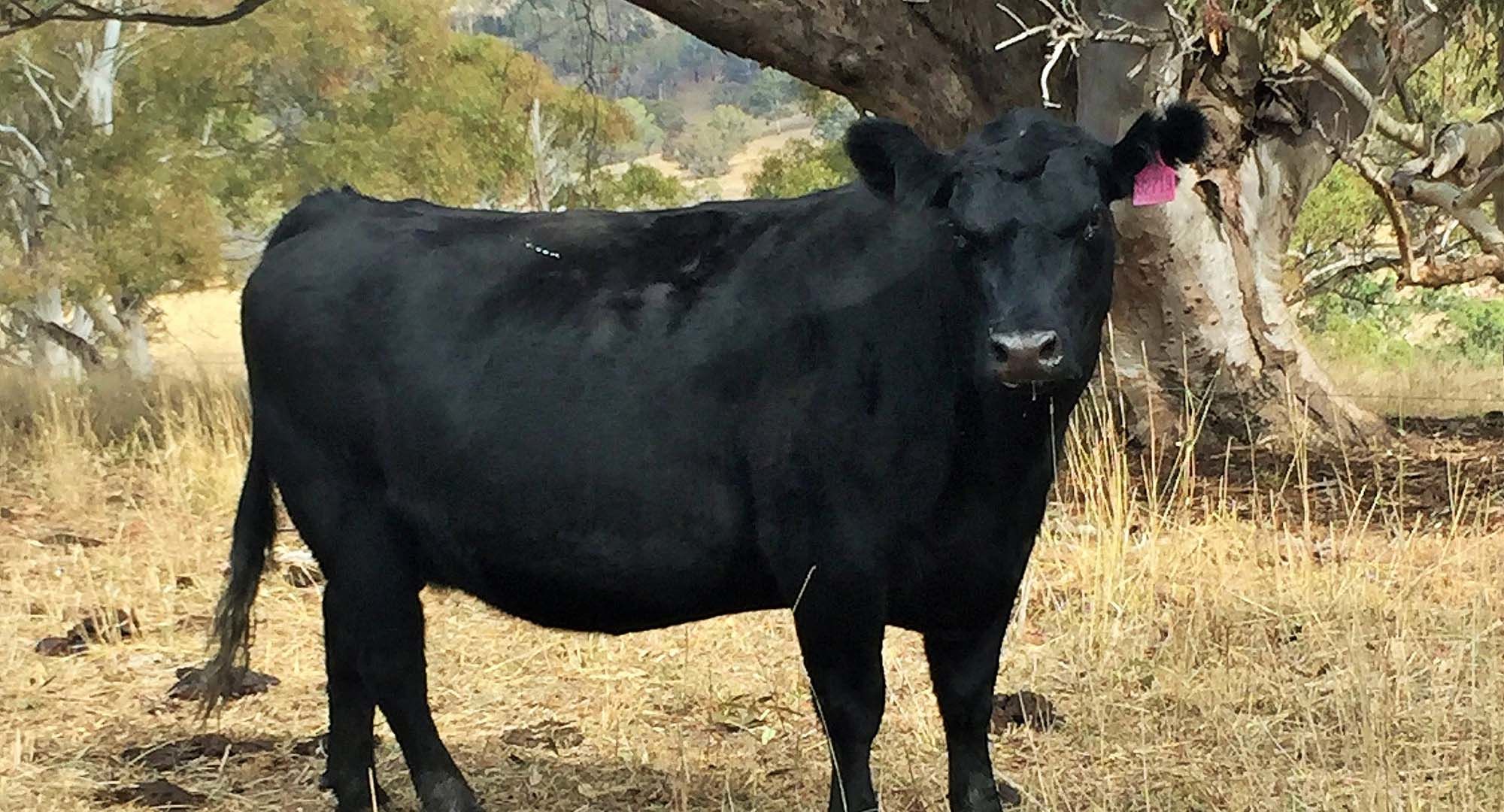Our Cattle Philosophy
| We believe (and many people agree with us) that it is possible to produce from moderate size cows, steers that can be profitably fattened on grass or in a feedlot, and replacement heifers which are fertile, low maintenance and easy fleshing on grass only. This is achieved by adding thickness and fleshing ability to moderate framed females. As beef production inputs continue to rise in price, at a faster rate than the price of beef, the only way to increase profits is to eliminate entirely or reduce drastically the need for inputs other than grass. As it takes less feed to maintain a moderate size cow than a large frame cow, you can run more moderate size cows and therefore wean more calves/kilograms of beef (using moderate cows rather than large frame cows) thereby increasing your profit. KILOGRAMS OF BEEF PER HECTARE determines profit not kilograms of beef per animal. |  |
Philosophies Behind Our Cattle
1. Cattle traits – fertile, low input, medium frame, with fleshing ability bred in not fed in, structural soundness and solely grass raised.
- Fertility: females must produce and wean a calf every year (of desirable quality), from the age of two, or they are culled.
- Calving ease: no assistance can be given, any female requiring assistance at calving is culled, together with its calf.
- Early maturing.
- Easy fleshing: ability to maintain good body condition on grass only (mineral supplements are allowed).
- Ability to convert low quality grass into milk and meat.
- Structurally sound: good feet, legs, udder and coat / hair.
- Temperament: all bad temperament animals are culled.
- Longevity: cows must have a long and productive life cycle.
- Frame score: 3 to 5 (moderate size).
- Milk: quality rather than quantity.
2. Our management practices apply pressure on the female herd to force out non-adapted and infertile animals – at least 15% a year. Each year we cull all empty, late or dry cows.
3. Replacement heifers are developed solely on grass with only mineral supplementation. We want only the most efficient and adapted heifers to make it into the breeding herd.
4. No breeding age females are treated for parasites – natural resistance must be developed.
5. To ensure high fertility a 42-day joining period is used.
6. We aim to achieve a “balance” between all cattle traits.
7. Optimum size/performance is much more profitable than maximum Size/performance. All the performance extremes promoted by Seed Stock producers will be avoided.
8. Our cows are run in a real-world environment as tough as – or tougher than – the environment most commercial cows are run in.
9. A bull calf, must be born unassisted from a fault-free cow that has never missed a breeding opportunity, to make it into a bull sale.
10. The selection criteria that comprise the breeding program is more important than the breed of cattle.
11. Honesty and integrity will not be compromised.
To achieve these objectives, we will continue to use PHARO CATTLE COMPANY (PCC) Genetics developed solely on pasture.
Cows Must Fit Their Environment
To achieve optimum production, a producer’s cows must fit their environment rather than the producer changing the environment to fit the cows. Since many producers have cows that are inefficient (too big), they are forced to change their environment by providing hay or purchased feed to keep their cows in production. There goes what profit there is in beef production. We want a cow that can survive strictly on what the farm produces, with no additional inputs other than minerals. A cow must support the farm, not be supported by the farm.
We select for cows that thrive on pasture only with mineral supplementation. We let the environment sort out the “good ones”, while we show absolutely no sympathy for empty, late or dry cows. Cows must produce and wean a good calf every year or they are culled.
We don’t give second chances to a cow no matter how good it appears to be.
Desirable End Product
We not only want a cow that fits her environment, we also expect her to produce a desirable and profitable end product. Her calves must be able to feed efficiently and meet the requirements demanded by the consumer and beef industry.
Contrary to mainstream opinion, we know that it is possible to produce ideal replacement heifers and ideal feeding steers with the same bull. To prove this point, Pharo Cattle Company enrolled their steer calves in a US feed and carcass test for three consecutive years. Pharo was extremely pleased with the results. For further details of this trial click on the following link: About - Pharo Cattle Company
Co-Operative Producers
Over the years Pharo’s seedstock program has evolved into a network of outstanding Cooperative Producers thereby increasing their bull sale numbers without sacrificing quality by accepting only the best bull calves from select co-operative herds.
Pharo Cattle Company now has a Cooperative Producer in Australia at Glen Innes in New South Wales – Furracabad Station.
Pharo Cattle Company History
For further details and information go to the following link: History